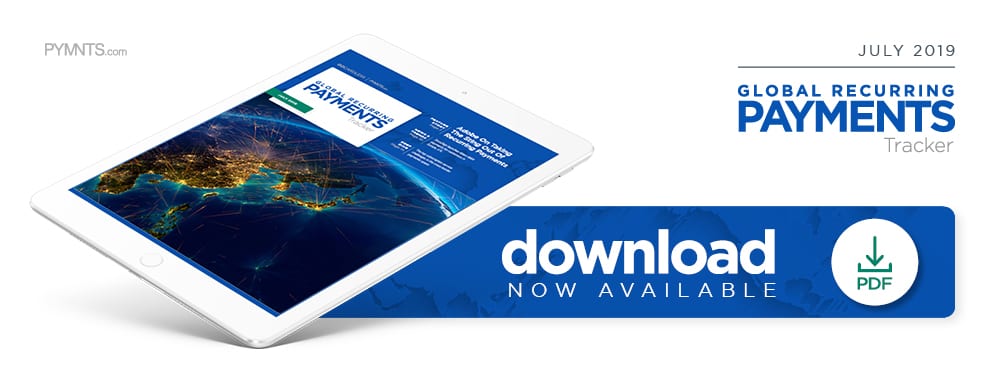Deep Dive: Smoothing X-Border Subscription Payment Pains

Subscription businesses can get only so far serving their local customer bases. To stay competitive, merchants must be ready to expand their subscription offerings into new markets around the globe.
Consumers worldwide appear increasingly receptive to subscription offerings, with a recent survey of those in 12 countries finding the share of adult respondents who have subscription services rose from 53 percent in 2014 to 71 percent in 2019.
Expanding operations to reach customers like these requires that businesses not only offer appealing products and services, but also provide payment experiences that are both convenient for consumers and easy for the companies to manage.
Cross-border subscription businesses often struggle to deliver the payment experiences their customers expect. This is because cross-border payments are both more complex than domestic ones and tend to have more risks associated with them. Firms operating across borders can thus find themselves waiting for transactions to settle, struggling to pinpoint their transfers’ statuses or being required to handle FX changes. In the end, they are forced to wrestle with these and other challenges rather than focusing on their products or expanding their operations.
This month’s Deep Dive explores the key frictions afflicting recurring cross-border payments and some of the new and ongoing efforts to alleviate those pain points.
Costs of Doing Cross-Border Business
Selling to overseas subscribers means businesses must handle payments in multiple currencies. Consumers want to see prices in their home currencies when they consider signing up for services, rather than having to calculate conversions in their heads. Subscribers also want to plan on being charged a consistent monthly fee, which further necessitates that prices be listed in the currencies that are popular in each locale.
Many major subscription service players have already taken this payments-localization approach. Spotify charges Mexican consumers in pesos, for example, and Microsoft charges those from Brazil in real. That means merchants must take on the FX risks and hedge against any uncertainties, however.
Businesses often also incur other expenses from international trade. For one, traditional money movement methods like wire transfers can be costly, and card payment acceptance requires merchants to accept processing fees. Additionally, the compliance costs associated with processing payments have increased over time as requirements become ever more complex. Merchants’ financial institutions (FIs) or payment processors are no doubt well aware that adhering to today’s stricter anti-money laundering (AML) regulations, tax evasion laws and economic sanctions — while simultaneously combatting cyber fraud — all add to these transactions’ complexity and expense.
Security is important, though, as the tally of major publicly reported cyberattacks rose 165 percent between 2013 and 2017. Businesses can therefore not afford to work with FIs that skimp on regulatory compliance or sideline their security efforts, and banks and credit unions must find other ways to reduce international trade costs for themselves and their business clients.
Some FIs seek to streamline their banking transfers by partnering with cross-border transaction FinTechs that act as one-stop intermediaries between them and other banks. This spares FIs from having to maintain various partnerships, instead enabling them to simply turn to one firm for their international transfer needs.
Strategies to reduce the risk of FX rate changes also often include efforts to accelerate transactions’ speeds, thus limiting the time during which relative currency values could change.
Speed and Accuracy
Combatting hard-to-predict FX rate oscillations is not the only reason businesses are clamoring for smarter recurring payment solutions, however. Many speed hurdles affect the international payments space, and cross-border transactions often take three to five business days to settle if nothing goes wrong.
Simple payment information errors — such as typos in recipients’ account numbers — can cause major delays, resulting in failed payments returned to their senders. During these waits, firms may find that lack of visibility into the status of their payments holds them back from taking advantage of surprise opportunities to invest. Payments may move through many intermediaries, too, each adding time to the processing journey.
Financial players’ attempts to address such issues include offering pre-validation services to confirm payment details prior to initiating payments, creating regional instant payment schemes or making domestic real-time payment systems interoperable to quickly move funds. The European Payment Council’s Single Euro Payment Area Instant Credit Transfer (SCT Inst) system operates across countries, for example, and several southeast Asian nations entered a 2017 agreement to interconnect their own such networks.
API integrations can also help businesses access domestic rails, and ISO 20022 messaging standards for payment schemes can synchronize systems and pave the way for interoperability. Other cases have seen banks explore distributed ledger technology to handle that messaging.
The cross-border recurring payments space is rife with challenges, but also presents many openings for subscription companies and their FIs. Neither can afford to sit out on international business opportunities if they wish to remain competitive in the modern global economy. New initiatives aim to reduce the complexity, costs and settlement times involved in such transactions, meaning the work required for subscription companies to go global will only shrink as efforts and technologies continue to evolve.

